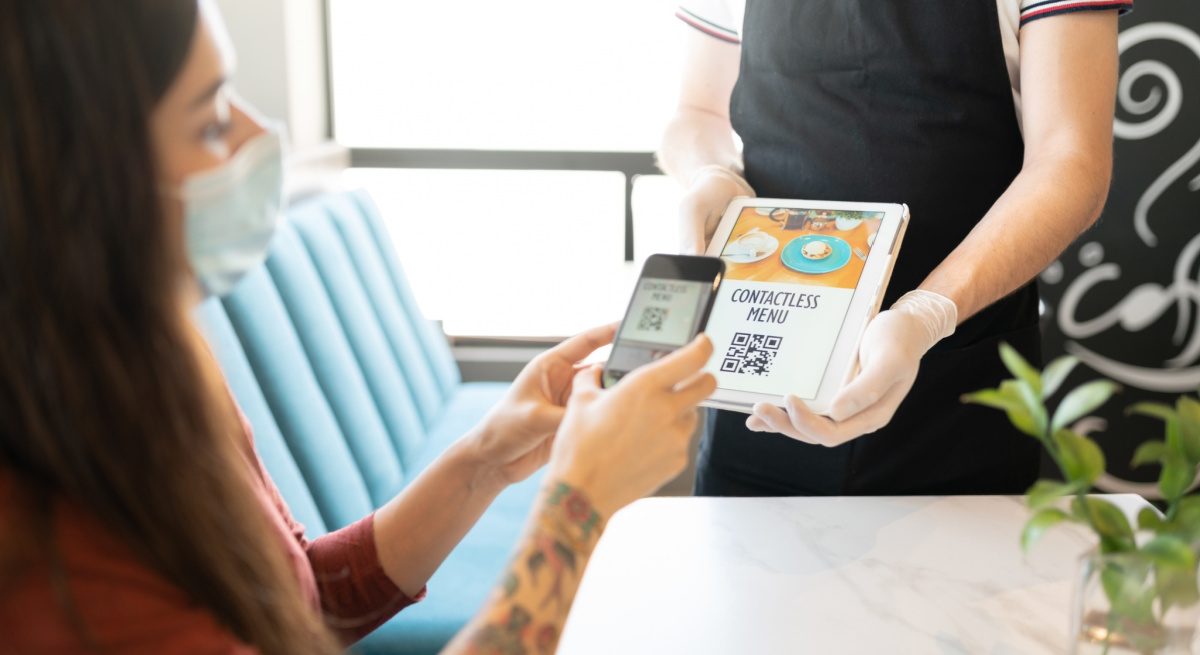How Contactless Technologies Can Help Counter Hesitations About Eating Indoors
3 Min Read By Gabriel Weisz
Restaurants took a hard hit at the outset of the pandemic, with revenues taking a sharp dive by more than 50 percent through April. Since then, the restaurant industry has experienced its ups and downs as the pandemic continues and restrictions fluctuate. As news of loosening restrictions in some parts of the country offers diners an opportunity to return to indoor dining, will customers be ready and willing?
According to a recent study by McKinsey, more than 80 percent of survey respondents reported medium to high anxiety levels about the idea of returning to dine-in restaurants. The activities that cause the most anxiety appear to be touching shared surfaces and proximity to other customers. To encourage a swift recovery, restaurant owners and operators must think creatively and conscientiously about how they alleviate these fears and ensure a safe experience.
Contactless is not just a solution for our present circumstances.
For the foreseeable future, most restaurants offering indoor dining will be operating at greatly reduced capacities to allow adequate social distancing – a move that should help alleviate those fears of being too close to other customers. However, restaurants must still address customer anxieties about touching shared surfaces. One such way is through the introduction of contactless technology.
As the CDC has stated, the virus is transmitted through the air, as well as by touching contaminated surfaces and then transferring to the nose or mouth. In my home state of California, which has continued to battle the pandemic, the Department of Public Health advises restaurants to provide menus via alternative measures, such as through the customer’s own personal electronic device. It also encourages the use of credit cards and contactless payment systems. With these guidelines in mind, contactless technologies are finding their calling in the pandemic environment as they enable customers to use their own mobile devices, thereby greatly reducing contact or touching, as the name would suggest. Such technologies are rapidly rolling out across the restaurant and hospitality industries so that customers can enjoy their experience, while minimizing contact with other people.
To paint a picture, restaurant guests can sit down at their socially distanced table, scan a QR code using their own smartphone, and from there order their meal, pay their bill, and even leave feedback. This greatly reduces interaction with employees and can even put them in more control of their experience. No need to flag down a server or wait for the check. Additionally, that immediate feedback can offer valuable insight into how you are performing and meeting customer needs, as well as provide potential ideas for how to improve.
Our recently launched Kontactless platform is seeing rapid adoption from restaurant and food service brands large and small who are seeking to navigate ongoing coronavirus challenges. It reduces the use of unsanitary ordering kiosks, menus, and payment terminals, while at the same time elevating the guest experience.
Large restaurant groups are adopting these types of technologies, as well as small “mom and pop” establishments who may initially start by just offering QR-code based menus. In fact, many restaurants have already experimented with QR-code technology for marketing purposes or menu-display but have not leveraged its full potential. Now by linking with POS systems, restaurant owners and operators can not only operate more efficiently, but they can enable an experience that makes their customers feel comfortable and in control.
Any digital investment now should be seen as an opportunity.
Contactless is not just a solution for our present circumstances. By adopting contactless technologies now, restaurants can solve the immediate problem of how to help customers feel safe and comfortable dining out. And in the long term these technologies will deliver valuable insights and efficiencies which will make the business stronger and steadier.
Any digital investment now should be seen as an opportunity. The most successful businesses of tomorrow will be those that acted quickly in implementing technologies to keep customers safe, gain valuable insights and foster loyalty and better communication with their customers.
If 2020 has taught us anything, it is that the future is unpredictable. And as many experts have cautioned, we could be in for a ‘start and stop recovery’ for far longer than we would hope. The best way to ride this out is to put technology in place now that will allow you to scale up and down as needed.


